Juglans nigra, or black walnuts, are large deciduous trees that grow to a majestic 75 to 100 feet tall. Birds and squirrels find sanctuary in their canopies, and humans enjoy the shade below.
Although they produce edible nuts, these trees are best known for their rich and durable wood, used to make a variety of products like furniture, cabinetry, flooring, and gunstocks. Black walnuts are both attractive and valuable. But these benefits can come with a price.
Planting and maintaining ornamental landscapes and edible gardens under and around these trees often causes confusion and frustration for gardeners, and leaves some of us scratching our heads.
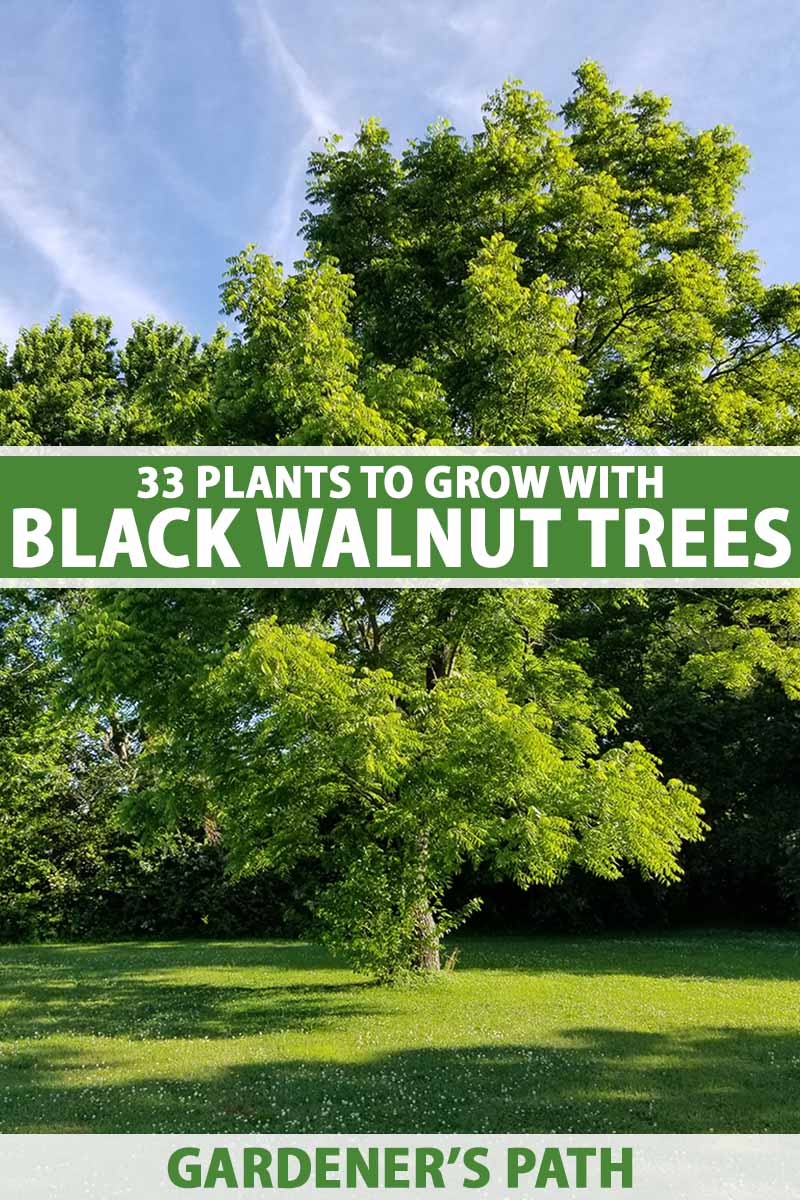
We link to vendors to help you find relevant products. If you buy from one of our links, we may earn a commission.
Some plants grow well, with absolutely no issues, while others underperform, struggle, and even die. The decline can appear randomly, targeting certain plants. It can occur slowly and gradually, quietly sucking out life, or it can swiftly overtake otherwise healthy plants before you have time to react.
In an effort to uncover the origin of the issue, gardeners may find themselves on a scavenger hunt, moving through a series of troubleshooting steps.
After checking for disease and insects, examining roots, measuring moisture, and even sampling soil, eventually they look up. And there it is. Their eyes land on the black walnut tree.
What is it about this tree that causes a decline in the health of some plants? It’s an expert in chemical warfare.
Black walnut trees and their relatives produce an allelopathic chemical known as juglone.
In an effort to protect themselves and capitalize on available surrounding resources, chemical compounds are released from their buds, leaves, nut hulls, and roots that negatively impact the health of certain plants that come too close. It’s survival of the fittest!
The good news is that while some plants may be doomed, others will do just fine and even flourish under these conditions. And knowing which plants to choose is your first step toward success.
Read more about black walnut cultivation here. In this guide, we’ve put together a collection of plants from different categories to get your gardens moving in the right direction.
Here’s a quick look at what’s ahead:
33 Juglone-Tolerant Plants to Grow Near Black Walnut
Before we jump right into the list, let’s talk about black walnuts and juglone toxicity for a moment.
Black walnut trees can live up to 250 years. If you’ve purchased or inherited a property with a large black walnut, chances are that it’s called that property home for many decades.
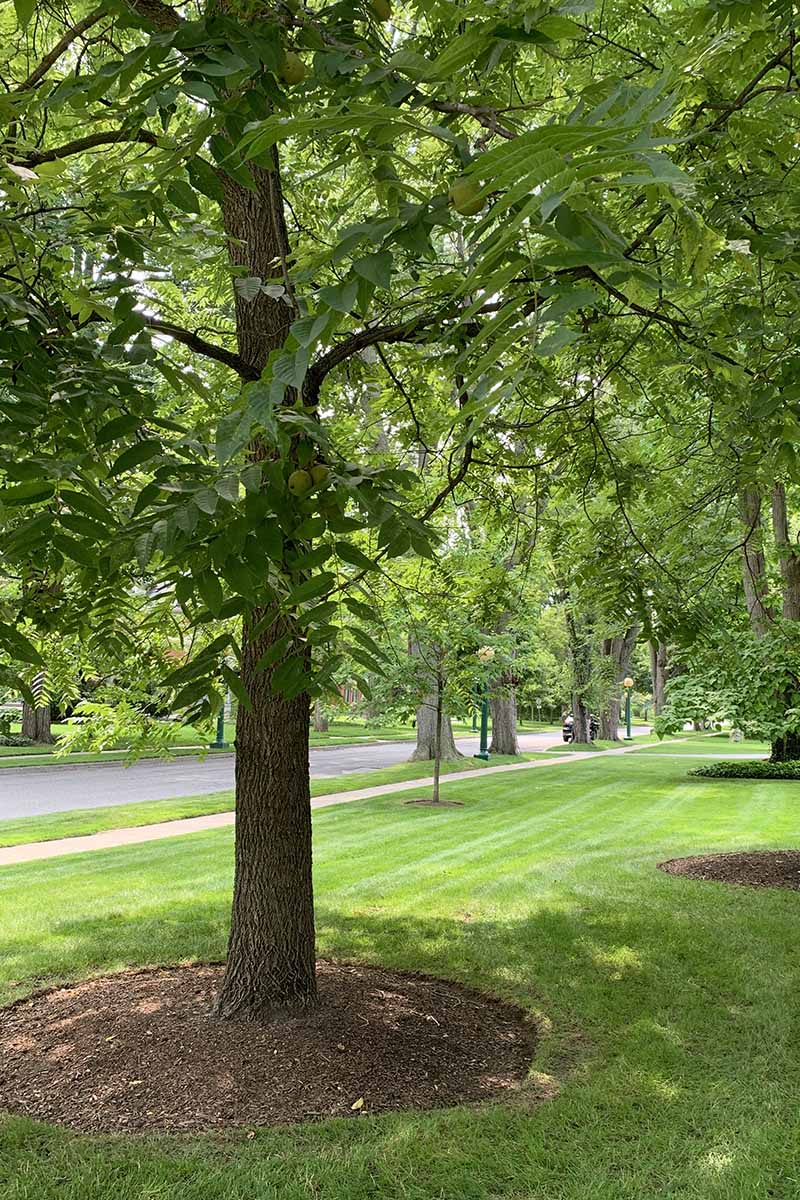
This means there will be an established network of feeder roots in the soil within the dripline, and possibly further out, collecting water and nutrients.
While juglone sensitivity has been observed and documented in certain plants over the years, some experts advise that planting underneath any mature, established tree comes with certain risks.
It’s important to take great care not to damage sensitive feeder roots of the tree while digging planting holes or creating beds.
Also, consider that the closer you move toward the base of the tree, it’s wise to choose plants that tolerate shade and are drought resistant.
Learn more about juglone toxicity here.
Now that we’re all on the same page, let’s move on to our suggestions for planting near your black walnut tree.
Perennial Ground Covers
Ground cover plants not only look attractive, they do amazing work.
They stabilize and protect bare soils from erosion and water loss, and they can be grown as a lawn alternative when grass is not an option.
Flowering ground covers also promote pollination in other plants!
Here are a few suggestions for ground covers to grow under your black walnut tree:
1. Cranesbill Geranium
A vigorous perennial ground cover, cranesbill geranium (Geranium sanguineum) enjoys part shade under tall trees.
Blooming in May and June, different cultivars bring merry variations of pinks and purples to spring gardens.
Flowers hover on stems above the mounded foliage, and can be deadheaded if desired when blooms fade. The foliage itself is full and dense, reaching a height of nine to 18 inches.
Each plant spreads to about 18 inches, and multiple plants together can create a handy camouflage for bare ground, debris, or even irrigation tubing underneath.
Cranesbill geranium requires little maintenance and can be grown in USDA Zones 3 to 9.
‘New Hampshire Purple’ Cranesbill Geranium
‘New Hampshire Purple’ features cute, pinkish-purple flowers and bright green foliage that turns red in fall.
You can find ‘New Hampshire Purple’ available at Nature Hills Nursery.
Learn more about cranesbill geranium in our guide.
2. Creeping Phlox
A ground-hugging species, creeping phlox (Phlox subulata), also known as moss phlox, is small but mighty.
Topping out at about six inches high, this plant crawls outward, spreading quickly up to two feet wide.
Cultivars are available in shades of blue, pink, purple, red, and white. Early spring blooms open from April through May, and if deadheaded, plants may offer a second bloom later on in the season.
Creeping phlox is common in USDA Zones 3 to 9. It softens the edges of gardens and foundations, and looks comfortable while lazily draping over the edges of rock walls and borders.
‘Emerald Blue’ sports an abundance of bright blue flowers, completely covering its green, moss-like leaves.
One-gallon containers of ‘Emerald Blue’ creeping phlox are available at Fast Growing Trees.
Learn how to grow creeping phlox in our guide.
3. Ostrich Fern
Shade-loving ostrich ferns (Matteuccia struthiopteris) accent gardens with their frilly textured fronds. Forming vase-shaped plumes, the delicate foliage dances and rustles gently, with even a light breeze.
These lush green plants can reach heights of three to six feet. When supplied with constant moisture, they spread by underground rhizomes, forming dense colonies that contrast and balance flowering plants nicely.
Plus, the curled up “fiddleheads” that emerge in spring are edible! Ostrich ferns do well on their own with little maintenance in USDA Zones 3 to 7.
Find them at your local nursery or at Nature Hills Nursery.
Read more about growing and caring for ferns in our guide.
4. Sweet Woodruff
A herbaceous perennial ground cover, sweet woodruff (Galium odoratum) forms a bright green mat of tight vegetation.
In late spring, clusters of tiny white flowers emerge, but don’t let its petite size fool you. This plant is not as dainty as it appears.
In moist, shaded areas, It spreads rapidly via underground rhizomes. This is helpful for choking out unwanted weeds.
It requires little maintenance aside from controlling the spread. As its name suggests, when dried, sweet woodruff has a pleasant, sweet scent reminiscent of drying hay.
Suited to USDA Zones 4 to 9, sweet woodruff is a perfect selection for growing under black walnut trees, it’s ideal in borders, as well as naturalized areas of your landscape.
You can find sweet woodruff at Nature Hills Nursery.
Flowering Perennials
To me, perennial flowers are a must-have in every garden. They’re sustainable, eco-friendly, and cost-effective.
Not only is it satisfying to see the plants evolve and grow from year to year, but they also help build soil.
Unlike annuals, it’s unnecessary to replant perennials every year, so unless you’re dividing or transplanting, the soil is left undisturbed. The roots lock soil in place, reducing erosion and capturing moisture before it runs off.
Let’s take a look at a few that do well under black walnut trees:
5. Bee Balm
Bee balm (Monarda spp.), also called bergamot, is in the Lamiaceae family, along with mints.
This explains the faint aromatic quality of this herbaceous perennial’s square-shaped stems and dark green foliage.
The flowers of bee balm are unique, with distinctive bracts, and can be found in various colors like pink, red, violet, and white.
Butterflies and bees adore this 10- to 18-inch-tall plant, but keep in mind that it can be prone to powdery mildew.
Balmy Purple bee balm (aka M. didyma ‘Balbalmurp’) sports vivid magenta flowers and grows to a mature height of 10 to 12 inches.
Find Balmy Purple bee balm available at Nature Hills.
Read our guide for an in depth look at bee balm.
6. Black-Eyed Susan
The classic black-eyed Susan (Rudbeckia hirta) is a cheerful choice for black walnut landscaping.
The shape of the flowers are similar to daisies, only a bit larger at about three inches in size. They’re bright yellow to orange with a dark brown, conical center.
The plant stands about two to three feet tall at maturity. Its long, lance-shaped leaves and stems are a deep green and have a rough, hairy texture.
Black-eyed Susan adds a vivid pop of color and makes a statement planted in groups. It also makes an excellent cut flower.
Rudbeckia is winter hardy in USDA Zones 3 to 7 and is drought tolerant.
‘Glitters Like Gold’ Black-Eyed Susans
The hybrid cultivar ‘Glitters Like Gold’ boasts long-lasting, three-inch blooms and can be found in #1 containers at Nature Hills Nursery.
Read all about black-eyed Susans and how to care for them in our guide.
7. Coneflower
Native to the United States, coneflowers (Echinacea spp.) are a favorite of American gardeners.
They’re also a favorite of bees and butterflies who love to visit their large, five-inch, daisy-like flowers.
Flower colors include various shades of the standard pinks and purples as well as vibrant oranges, burgundies, and other fun colors.
The plants aren’t fussy, and although they love sun, they’ll tolerate some shade under your walnut tree.
Easygoing and dependable, coneflowers bring maximum value to the garden. Growing in clumps, their height usually tops out at about four feet and their flowers are long-lived.
Coneflowers grow in USDA Zones 3 to 8 and they’re perfect for mass planting and for native, wildflower, and woodland style gardens.
Take a look at the vibrant shade of this hybrid Crazy Pink™ (Echinacea x ‘Adam Saul’) coneflower, with nursery containers available from Plants by Mail.
Learn all about coneflowers in our guide.
8. Hosta
Rhizomatous, clump-forming perennials, hostas (Hosta spp.) form long and elegant stems with multiple bell-like, fragrant flowers in different shades of purple, and white.
While hosta flowers are a highlight, they might be best known for their easily recognizable foliage.
Hostas range in size from small to giant, and the leaf color varies widely from bright, neon green and yellow to subdued blue-gray. They can be solid or variegated, smooth or textured.
A visit to your local nursery or a walk through a botanical garden is sure to reveal a new variety you haven’t yet discovered, as will our roundup of top-pick hostas.
This perennial does exceptionally well in the shade under trees, especially the blue varieties.
They require consistent moisture and an annual top-up of compost, but aside from that they’re low maintenance.
These shade masters grow in USDA Zones 3 to 8, and depending on size, can be used as ground covers, accents, or focal points in the garden.
For a blue hosta option, check out ‘Blue Angel’ with its large, textured blue-green leaves and white flowers.
You can find plants in one-gallon containers available at Planting Tree.
Learn more about hostas and how to grow them in our guide.
9. Tulip
A perennial bulb, the tulip flower (Tulipa spp.) represents the essence of spring.
Popping up in April and May, they welcome us to a new growing season with refreshing splashes of color. Flower shapes range from the traditional cup to frilly, fringed, star-shaped, and more.
Flowers sit atop green stems with large, wide leaves and some can reach heights of two feet.
Tulips make showy cut flowers and stunning spring displays when planted in patterned groupings.
La Belle Epoque Bright Mix Tulips
For a soft, romantic color scheme, take a look at La Belle Epoque Bright Mix which features three double-petaled, late-flowering cultivars: ‘Copper Image,’ ‘Double Late White,’ and ‘Double Late Rose.’
You can find bulbs in a variety of package sizes available at Eden Brothers.
With so many options and so much to learn about tulips, you may want to read more in our guide.
Annual Flowers
Annual plants offer an easy way to add colorful accents to your landscaping plan.
Their short-lived nature allows you to change your design scheme from year to year. Consider these if you’re planting near a black walnut tree:
10. Calendula
Calendula (Calendula officinalis), also known as pot marigold, is famous for its typically vivid orange and yellow flowers, and touted for its health benefits. They make sweet cut flowers for bouquets and arrangements, and can be deadheaded to encourage more blooms.
Calendulas grow in part shade, but do a little better in the sun, so this annual is a good choice for gardens further out from the drip line of black walnuts where they might receive more sun exposure.
You can find calendula seedlings grown in containers at your local nursery or greenhouse.
If you’d like to try growing your own from seed, take a look at ‘Sunset Buff,’ available at Eden Brothers.
It’s a gorgeous heirloom variety with big, double blooms in a subtle bicolored combination of pink and cream, sold in packets or by weight.
Check out our guide to learn more about calendula.
11. Impatiens
Also known as busy Lizzie or balsam, impatiens (Impatiens walleriana) are possibly the most popular annual bedding plants for US gardeners.
You’ll find cell packs of this annual each spring at nurseries, greenhouses, big box stores, and even grocery and corner stores.
This tender perennial grows in a spreading mound up to 24 inches across, depending on the variety. It prefers consistent moisture and part shade to full shade, making it a sensible choice for gardens under your black walnut.
Choose from a vast number of hybrid cultivars in colors to suit your scheme.
Rockapulco® ‘White’ Double Impatiens
You’ll even find some with fancy, double flowers that resemble roses, like this Rockapulco® ‘White’ double-petaled impatiens available from Nature Hills Nursery.
Get the full story and learn more about impatiens in our guide.
12. Tuberous Begonia
The tuberous begonia (Begonia x tuberhybrida) is in a class of its own.
Named for their tuberous roots, flower sizes and colors vary between cultivars, in shades of orange, pink, red, yellow, and white.
Common height and spread is between 12 to 18 inches, and this tender perennial, typically grown as an annual, prefers part shade.
This makes it a good choice for borders and edging planting beds. It dislikes high heat and humidity, and does best with consistent moisture, good ventilation, and regular feeding, so maintenance can be a little demanding.
‘Splendide Ballerina’ Tuberous Begonia
‘Splendide Ballerina’ gives a large bloom size in a lemon yellow and pastel peach combination that looks delicious enough to eat.
It’s available in packages of three, six, or nine tubers at Eden Brothers.
Learn all there is to know about tuberous begonias in our guide.
13. Zinnia
Ranging in size from six inches to four feet tall, hundreds of zinnia (Zinnia spp.) cultivars offer a variety of flower shapes and colors.
Zinnias prefer sun, so plant them far enough from the base of your black walnut to bathe in sunlight.
Flowers begin to open in June and continue through the rest of summer. Deadheading encourages new blooms. These annuals like evenly moist, well-drained soil.
Seedlings can be transplanted, but they’re a little sensitive, so if you can, start them from seed directly in the ground.
‘Benary Giant Wine’ from Eden Brothers is a handsome, tall variety with bright, wine-colored blooms and foliage that’s resistant to powdery mildew
Learn more about growing zinnias in our guide.
Ornamental Trees and Shrubs
Ornamental trees and shrubs lay the groundwork as foundations to build gardens around. Consider the following plants to help build your design:
14. American Arborvitae
American arborvitae (Thuja occidentalis) is commonly known as eastern white cedar or northern white cedar. It’s a dense, conical or pyramidal-shaped evergreen that grows in USDA Zones 2 to 7. The green foliage forms in scale-like and flattened sprays on branches.
This evergreen can reach a height of 20 to 40 feet and spreads to 15 feet. It prefers full sun to part shade and requires little maintenance.
Remaining green through winter, it provides shelter for wildlife, wind protection, and visual appeal even through the cold months when deciduous trees and shrubs lose their leaves.
T. occidentalis is commonly available at nurseries and greenhouses. Find it online in one-gallon containers and sizes ranging from two to four feet at Fast Growing Trees.
Learn how to plant and care for arborvitaes in our guide.
15. Forsythia
The early spring yellow flowers of forsythia are a cheerful addition to any garden.
The Forsythia genus includes 11 species and numerous cultivars in sizes ranging up to 10 feet tall to suit your site requirements.
This deciduous shrub can be used as a focal point or planted with others to form a flowering hedge.
Forsythias do well in full sun to light shade and are hardy in Zones 5 to 8. Aside from some occasional pruning, they’re low maintenance.
‘Lynwood Gold’ is a fast-growing hybrid available in two-quart or three-gallon containers at Fast Growing Trees.
Learn more about forsythia in our guide.
16. Ninebark
Common ninebark (Physocarpus opulifolius) is a deciduous shrub. A vigorous grower, some specimens can reach up to eight feet tall.
Round clusters of adorably tiny white flowers, sometimes with a hint of pink, develop along the stems in late spring to early summer, leaving reddish-green seed pods behind as flowers fade.
Ninebark has an upright, arching form with densely layered leaves, making it a wise choice for hedging.
The bark exfoliates on mature branches, revealing layers of red and brown inner bark. Ninebark grows in a wide range of soils and does well in full sun to part shade.
Sweet Cherry Tea™ offers a strong contrast to other plants in the garden with its deep burgundy foliage. Find it at Fast Growing Trees in two-quart and two-gallon containers.
17. Rose of Sharon
A deciduous shrub easily grown in well-drained soils and full sun to part shade, rose of Sharon (Hibiscus syriacus) graces the garden with large flowers in shades of blue, pink, red, and white from late spring into autumn.
Grown in USDA Zones 5 to 8, this vase-shaped shrub can reach eight to 12 feet tall.
It can be trained to grow as a small tree or espaliered, and some strategic pruning will encourage more blooms.
This Pink Chiffon® rose of Sharon sold by Planting Tree is loaded with gorgeous pink blooms.
Read all about rose of Sharon in our guide.
18. Serviceberry
Serviceberry (Amelanchier spp.), is a large, deciduous, early-flowering shrub.
Native to eastern North America, it grows well in USDA Zones 4 to 8. Serviceberry can be pruned to form a small tree, reaching up to 30 feet tall.
Showy, white flowers appear in early spring and give off a pleasant fragrance before the dark green leaves unfurl. As fall approaches, leaves typically turn to shades of orange and red.
‘Autumn Brilliance’ Serviceberry
Amelanchier x grandiflora ‘Autumn Brilliance’ is a hybrid that features small white flowers, and dark green foliage that transforms to bright red and orange in the fall.
It’s available in two sizes ranging from two to four feet tall at Fast Growing Trees.
19. Viburnum
Most shrubs in the Viburnum genus are tolerant of juglone, but V. macrocephalum is one of my favorites, with its large puffy clusters of white florets.
This deciduous shrub thrives in Zones 6 to 9, blooming from May to June and reaching up to 10 feet tall and wide.
V. macrocephalum grows in full sun to part shade and makes an attention-getting focal point or an attractive flowering hedge.
Fairly resistant to most insects and diseases, it makes a low-maintenance option for planting near your black walnut.
Available in three-gallon containers, this Chinese Snowball bush from Fast Growing Trees doesn’t produce fruit, putting lots of energy into its huge pom-pom blooms.
Check out our guide to growing viburnum to learn more.
Edible Fruiting Trees and Shrubs
Whether you’re aiming to feed your family and friends or just curious about experimenting with edible landscaping, try these trees and shrubs if you’re planting near a black walnut:
20. Black Raspberry
Black raspberry (Rubus occidentalis) is a member of the Rosaceae family, a deciduous shrub with scrambling thorny stems reaching up to 12 feet long.
They produce clusters of dainty white flowers in the spring from May to June, then form succulent, dark berries shortly after.
This shrub grows wild in some areas of the United States, and as we all know, anything that grows wild usually isn’t fussy with soil or water requirements in its native environment.
Similar to other raspberries, for productive cultivation, proper pruning and management is a good idea. Black raspberries do well in Zones 5 to 9.
Rubus idaeus ‘Cumberland’ is a black raspberry bush that grows much larger than some other varieties, topping out at four to five feet tall.
You can find plants available at Fast Growing Trees.
Learn more about black raspberry and other brambles in our guide.
21. Cherry
Cherry trees (Prunus spp.) are easy to plant and many self-fertile varieties are available for home gardeners, so you don’t necessarily need to plant a pollinator to obtain a fruit harvest.
Flower blossoms emerge in spring in subtle shades of white to pink, making them a stunning early, albeit temporary, attraction in the garden before other flowers come into bloom.
Most cherry trees grow well in Zones 4 to 7, so look for one that will do best in your Zone.
As with most fruit trees, they need full sun for best production, so aim to locate this tree in a warm and sunny spot outside of the deep shade of your black walnut.
Various sizes are available to suit your garden space, from dwarfs to 25-foot-tall standards, and you can even train them against a wall or fence if space is limited.
P. avium ‘Stella’ will knock your socks off! This tree reaches 15 feet at maturity and produces dark, plump, and sweet fruit that is lovely for eating fresh.
It thrives in Zones 5 to 8 and you can find trees available to purchase at Planting Tree.
Learn more about cherry trees and how to care for them in our guide.
22. Currant
Red, white, black, and pink currants (Ribes spp.) are tough and reliable early-flowering shrubs that form clusters of pink, red, white, or yellow flowers in the spring, depending on the species or cultivar.
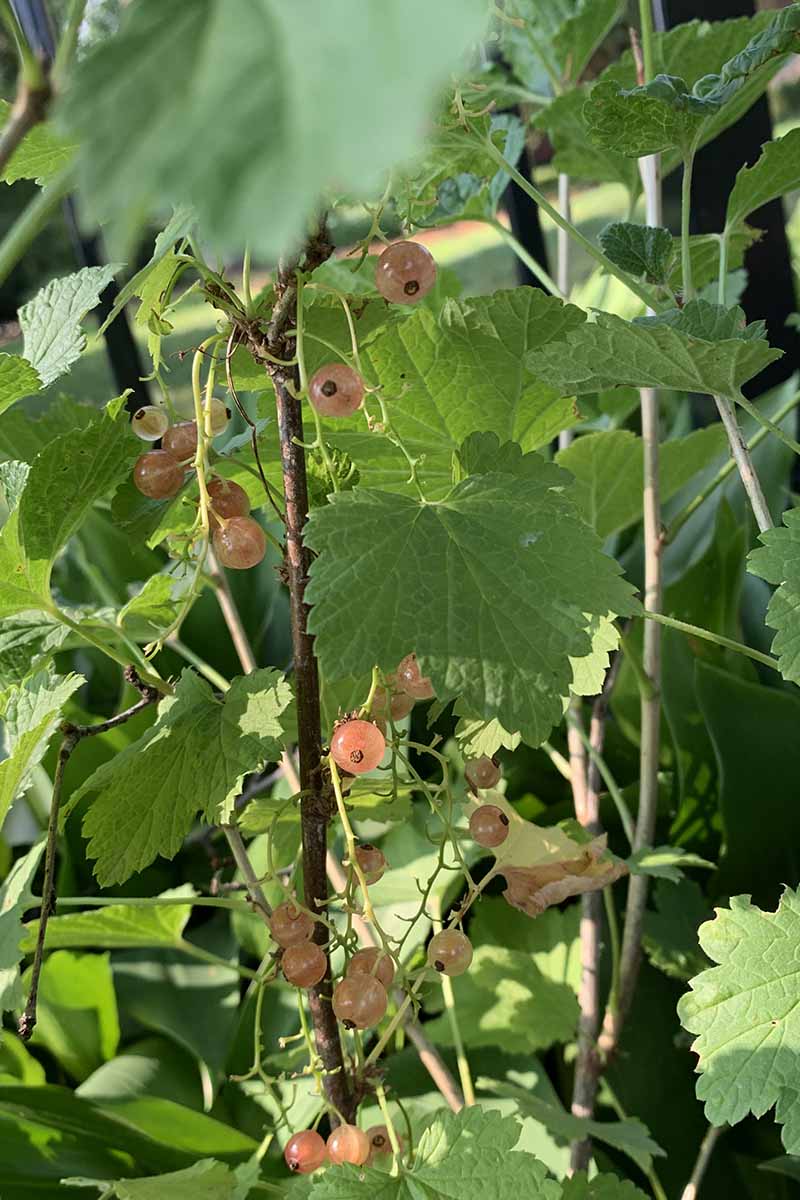
These shrubs prefer mostly sunny conditions but will tolerate light shade. Once established, they’re fairly drought tolerant.
Grown for both ornamental and edible purposes, a diverse selection of these plants will produce edible fruits that vary in size, form, flavor, and texture.
Most are self-fertile and different currant cultivars ripen at different times. These shrubs grow well in Zones 3 to 7.
R. rubrum ‘Pink Champagne’ is a compact shrub that produces large clusters of light pink berries with a pleasant and addictive tart flavor.
23. Peach
Peach trees (Prunus persica) are a great edible tree option for growing near black walnuts, but you’ll need to plant them in a spot that provides full sun – perhaps the south side of your tree, just outside the shade of the canopy.
Showy spring blossoms are an added ornamental benefit with peach trees.
For home gardeners, dwarf or semi-dwarf self-fertile varieties are good choices. Look for one to suit your location in Zones 4 to 9.
‘Early Elberta’ reaches a maximum height of 10 to 15 feet and grows in Zones 5 to 8. It’s available in three different sizes at Planting Tree.
Learn more about growing peaches in our guide.
24. Pear
If you have space for multiple fruit trees, consider planting pears (Pyrus spp.).
You’ll be overjoyed to see the cheerful spring blossoms, and satisfied when you taste the delicious homegrown fruit.
Find warm, sunny planting spots for at least two cultivars selected for cross-pollination. Some pears are self-fertile and may produce a harvest on their own, but it’s wise to add a pollinator as this will increase the size of your crop.
Dwarfs max out at about 10 feet tall, while standards can reach up to 30 feet. Pears need well-draining, fertile soil and require little maintenance once established.
P. communis ‘Red Bartlett’ is a common variety with a harvest time in August to September, suited to USDA Zones 5 to 9. Check it out at Fast Growing Trees.
If you’re new to growing pear trees, read our guide to learn more.
Vines
Incorporating vines into your landscape design plan is a creative way to add an additional layer of dimension. These vines do well under black walnut trees:
25. Clematis
A prolific climbing beauty, clematis (Clematis spp.) should be considered for your black walnut garden design.
These perennial vines produce masses of fragrant flowers available in a variety of different shapes and sizes. The color choices seem endless!
In Zones 3 to 9 you’ll find cultivars suited for different purposes – long climbers for fences, poles, and obelisks, and shorter vines for mixed borders and containers, with different bloom times.
They range in size and some can grow as long as 40 feet! Clematis is certainly a versatile vine to add to your landscape.
Check out ‘Jackmanii’ from Fast Growing Trees. With huge purple blooms, it grows up to 20 feet long and is available in one- or two-gallon containers.
For more information on growing clematis, take a peek at our comprehensive guide.
26. Honeysuckle
Climbing honeysuckle (Locinera spp.) is a deciduous twining vine with thin, pliable stems and solid green or variegated leaves.
As you pass near these vines during the summer, you’ll be drawn – along with the bees, birds, and butterflies – to the sweet-smelling fragrance coming from their trumpet-shaped flowers.
These vines wrap gently over fences, arbors, and pergolas in Zones 3 to 9. They grow fine in most well-draining soils in full sun to part shade.
‘Dropmore Scarlet’ Honeysuckle
Once established, they’re self-sufficient and drought-resistant, making them perfect for gardeners looking for low-maintenance options.
Lonicera x brownii ‘Dropmore Scarlet’ is a hybrid cultivar with long-lasting, coral-colored flowers. It’s available at Nature Hills Nursery in #3 containers.
Read all about honeysuckle in our guide.
27. Wisteria
As if stepping through a portal into a magical fairy tale, a mature wisteria (Wisteria spp.) cloaking an arbor in full bloom is sure to take your breath away, or at least slow it down to a relaxed and peaceful rhythm.
Depending on the variety, the draping, fragrant flowers can be showy and short-lived or longer-lasting and more subtly impressive. Colors include blue, pink, lilac, purple, and white.
Some are winter hardy and various types will grow well in Zones 4 to 9. They prefer well-drained soil and a nice sunny structure to climb.
They will still grow in the partial shade of your black walnut, but you may find flowering is slightly hindered.
W. macrostachya ‘Blue Moon’ blooms multiple times through spring and summer. Not all wisterias will show off quite as much as this cultivar, so you may want to check it out!
‘Blue Moon’ is sold in one-quart and two-gallon containers at Fast Growing Trees.
Learn the whole story about growing wisteria in our guide.
Vegetables
Growing vegetables under black walnuts can be tricky, and some are very sensitive to juglone, like tomatoes.
You can try raised beds or container gardening, but there are certain varieties of vegetables that will actually do quite well in the ground. Read on for a few suggestions.
28. Bean
Beans come in lots of shapes, colors, and sizes, and they’re easy to grow.
If you find yourself always eating the same kind of beans from the grocery store, why not try growing something different?
Green, yellow, and purple string beans are classic favorites for home gardeners. But also consider lima, pinto, and kidney beans as well as edamame, aka soybeans.
Plant seeds – the dried beans – in spring once the danger of frost has passed.
Give them about an inch of water weekly and limit nitrogen fertilization for a productive harvest. Remember to give pole beans something to climb!
For something a little different, check out these asparagus aka yardlong beans sold by Burpee in one-ounce packets.
Read all about the different kinds of edible beans and how to grow them in our guide.
29. Beet
Although beets aren’t always the most popular choice of vegetable, they’re incredibly healthy and easy to grow.
A variety of fun and beautiful colors are available like red, gold, purple, and white, and there are numerous ways to prepare this versatile vegetable.
Try roasting, steaming, and pickling them. Or experiment with Russian borscht soup! Chop the greens into mixed salads or add them to stocks and stews for a boost of flavor and nutrition.
Beets grow well in cooler temperatures, so plant seeds early in spring or late in the fall.
Thin seedlings when they’re young to give them at least two inches in between, and provide at least one inch of water per week.
You can harvest the leaves any time and pull the beet roots when they’ve reached maturity, which is typically once they reach one to two inches in diameter.
‘Chioggia’ beet seeds are available at Eden Brothers. When cut in half, they reveal a neat alternating red and white pattern of rings like a bullseye. How fun is that!
Read our guide to growing beets for more details.
30. Carrot
As with the other vegetables on our list, carrots come in a broad range of shapes and sizes.
Choosing my seeds every season is a thrill and I love to try new varieties. I excitedly anticipate the satisfaction of pulling a fresh carrot from the garden to see how it looks and tastes.
Try ‘Imperator’ that are long and tapered, or medium-sized ‘Nantes.’ ‘Danvers,’ thick and not too long, are perfect for raised beds. Experiment with colors beyond the traditional orange, like yellows, purples, whites, and pinks.
Carrots need deep, loose, and well-drained soil. They also need to be thinned if seeds are planted close together, to make room for root growth. Watering is critical during the first stages of development.
Try this organic Rainbow Blend, a mix of ‘Atomic Red,’ ‘Cosmic Purple,’ ‘Lunar White,’ and ‘Solar Yellow,’ from Eden Brothers for a delightful array of colors.
Read all about growing carrots in our guide.
31. Garlic
Garlic is possibly one of the easiest edibles to grow, as well as one of the most common ingredients in cooking.
I don’t know about you, but for me it always comes down to a classic combo of salt, pepper, and garlic.
Garlic is a perennial bulb in the Allium genus alongside chives and onions.
It’s grown as an annual herb, sowing seed cloves in the fall, leaving them to do their thing over the winter, poking out of the soil in the spring, and maturing in the summer.
Varieties fall into two groups, hardnecks and softnecks.
Hardnecks produce a flowering, edible scape and are better suited to cooler climates. Softnecks don’t flower and they’re best for warmer regions.
‘Chesnok Red’ bulbs from Burpee are sold in half-pound bags. Described as “one of the best for cooking,” this hardneck variety is an award winner. Give it a try!
Learn all about successful garlic growing in our guide.
32. Onion
How many onions do you purchase and use in one year? Aren’t you curious to know if you can grow your own? These vegetables thrive when grown near black walnuts, so give them a try!
Bulb onions are available in many forms with different characteristics: flat or round; red, yellow, or white; sweet or spicy.
Start plants by direct seeding or transplanting sets from the previous season. Onions need consistent moisture so be sure to quench their thirst.
When the tops have fallen over and most are dry, they’re usually ready to harvest.
For an easy to grow bunching onion, try ‘Evergreen Long White’ heirloom seed, available in packets from Burpee.
To learn all the details about growing onions, visit our guide.
33. Squash
Last but definitely not least on our list is squash. The brunt of endless jokes and viral memes, this vegetable is the gift that keeps on giving. If you grow one variety, you will likely want to try several more.
Squash varieties come in all shapes and sizes, so choose your favorite among the winter and summer types best suited for your Zone.
Common varieties are butternut, acorn, patty pan, crookneck, and the infamous zucchini, focus and victim of the aforementioned memes.
Squash grow on vines and do best in sunny spots, so position them outside of the deep shade of your black walnut in well-draining, fertile soil.
You can plant seeds directly in the ground or try transplants. Water deeply and infrequently during the growing season.
Depending on the variety, you may harvest shortly after flowering or later in the growth cycle.
Check the average number of days to maturity and growing instructions on the seed packet for your chosen squash for more details.
Check out ‘Elite,’ a fancy French hybrid zucchini from Burpee. Available in packets of 25 seeds, this summer squash is ready to pick early in the season.
Read more about growing summer squash in our guide.
Focus on Your Garden’s Strengths
If you’ve had trouble with certain plants failing under or near your black walnut tree, try some suggestions from this list instead.

As I always say, knowledge is power, and now you have more. Focus less on any weaknesses in your garden and more on its strengths. Put nature to work for you to make your job easier and more enjoyable.
Do you have a success story about growing under black walnuts? Please share it in the comments section below.
For more information about other types of nut trees that produce juglone, check out these guides next:

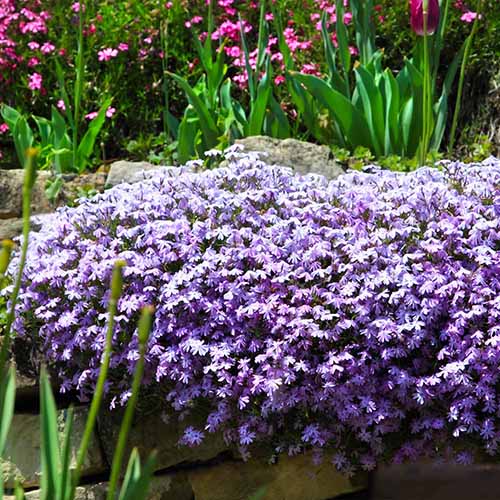
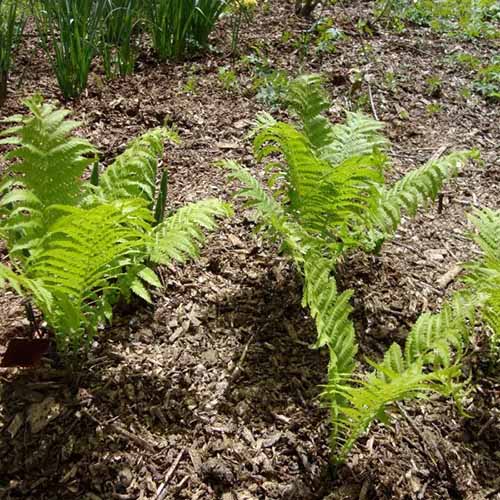

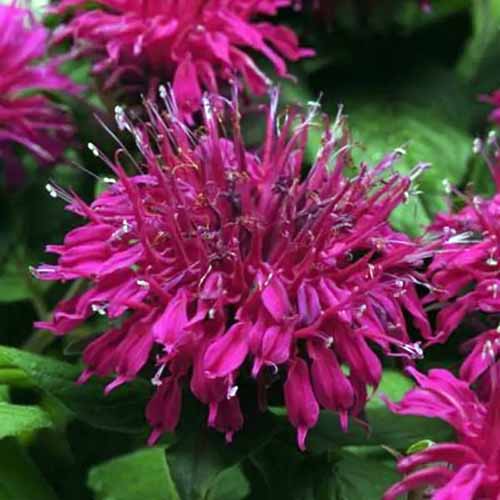
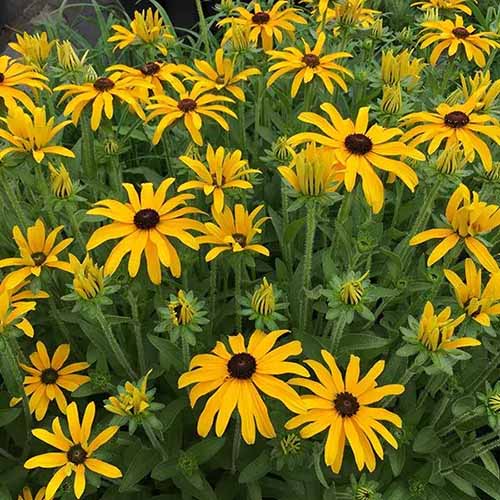
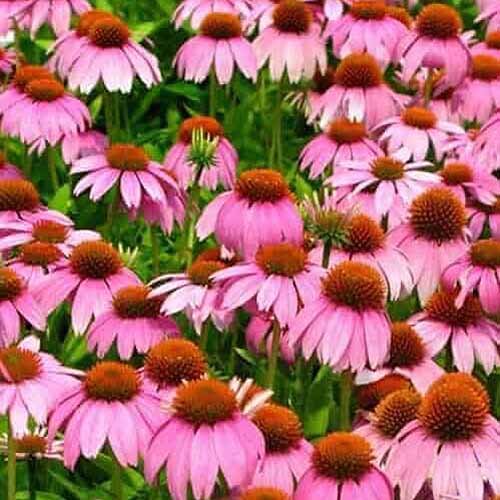
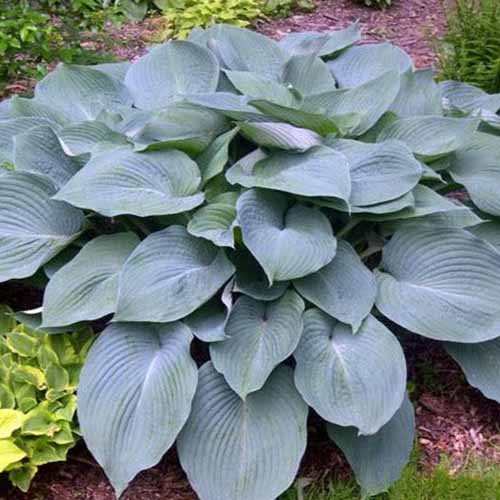
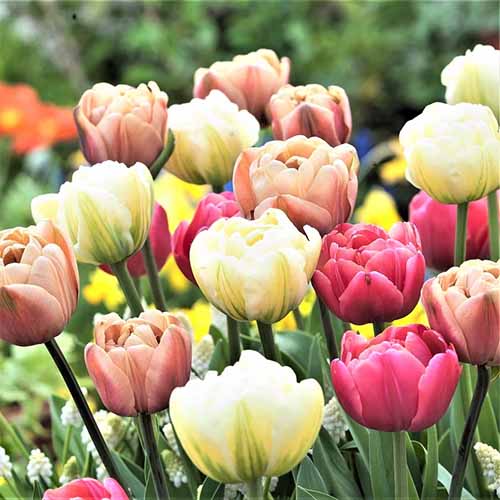
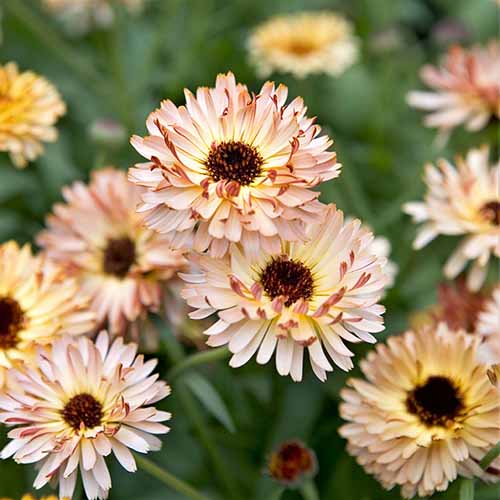
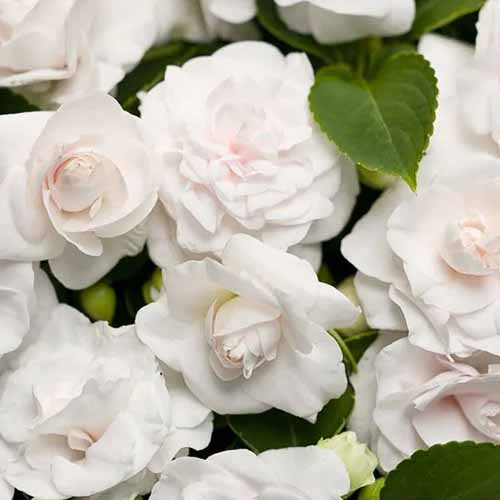
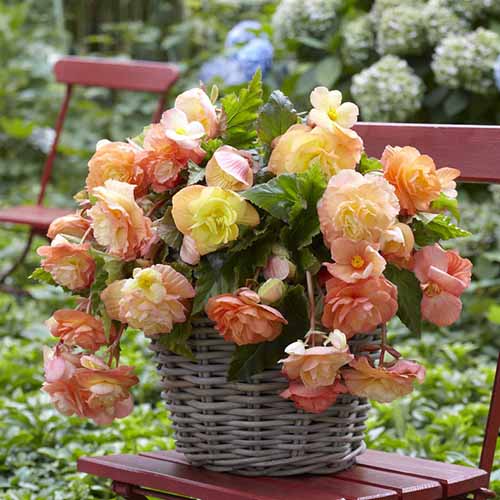
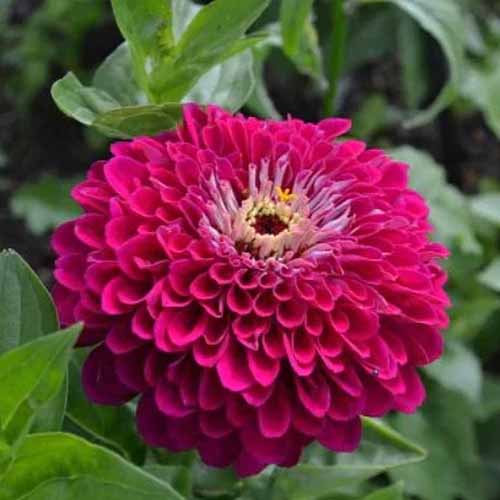
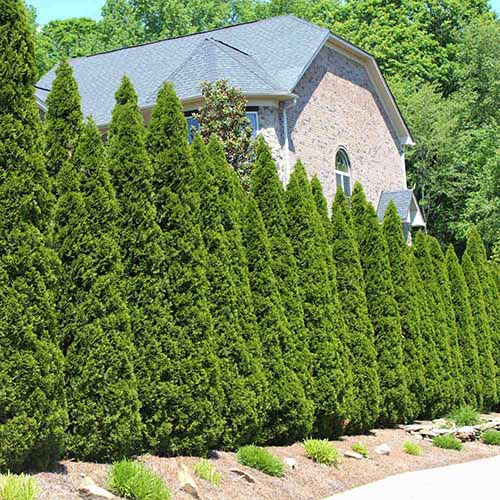
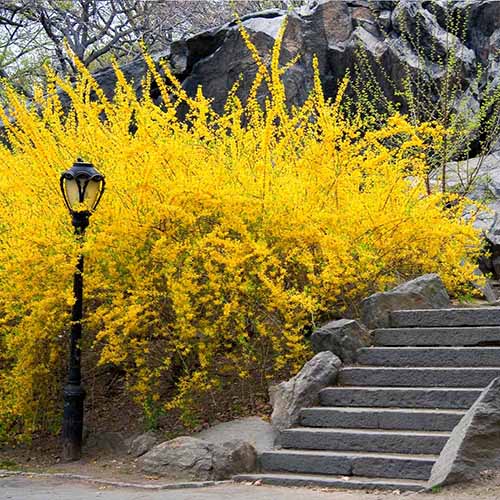
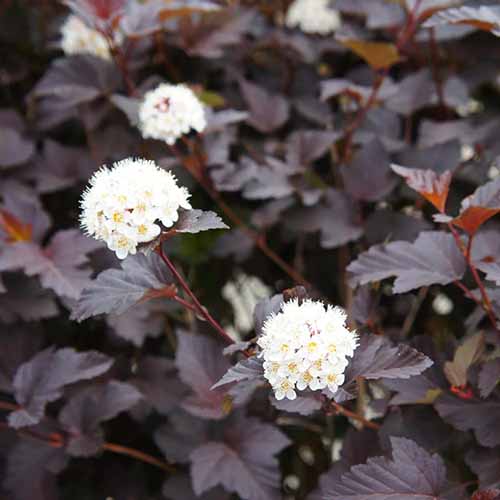
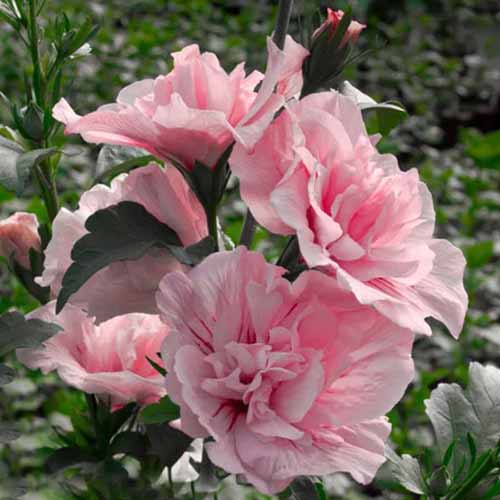
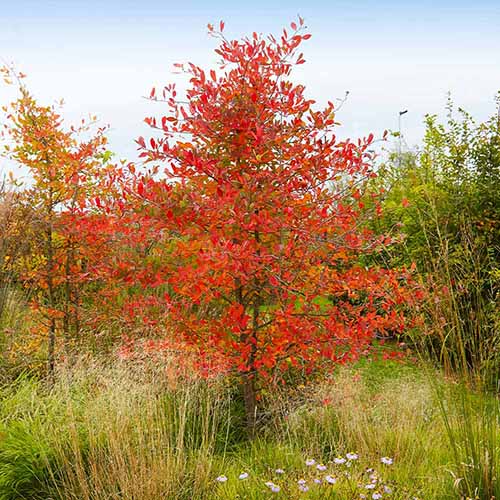
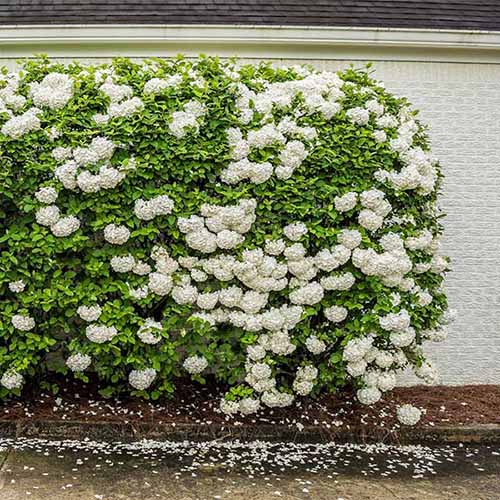
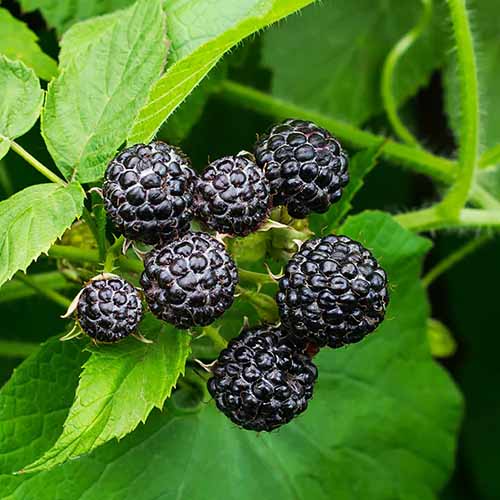
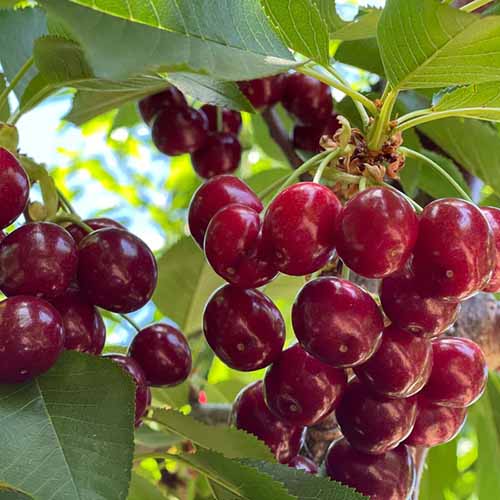
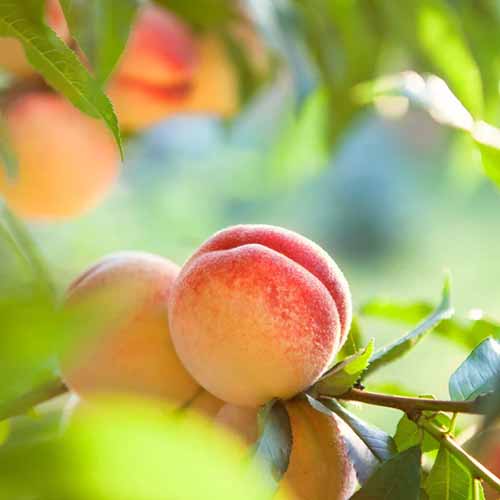

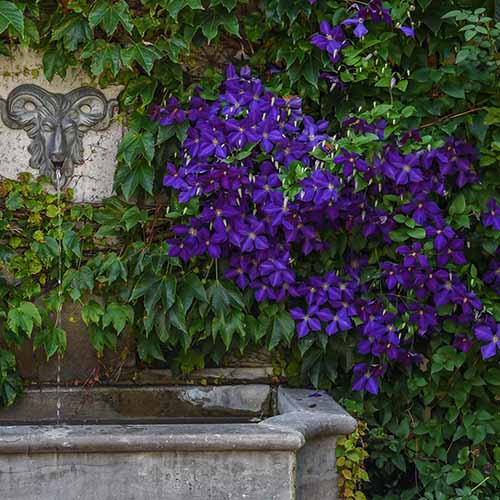
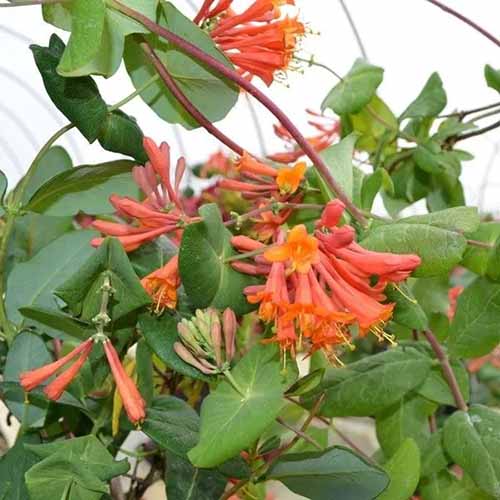
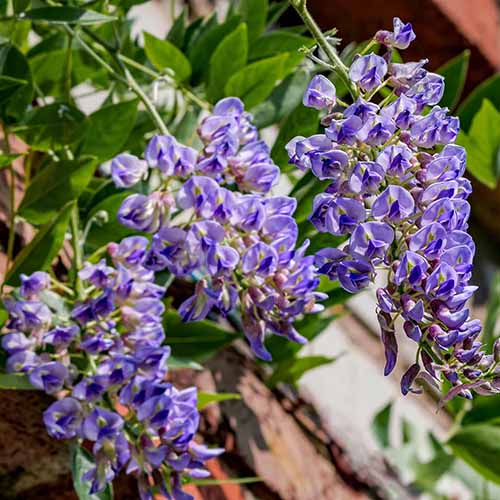

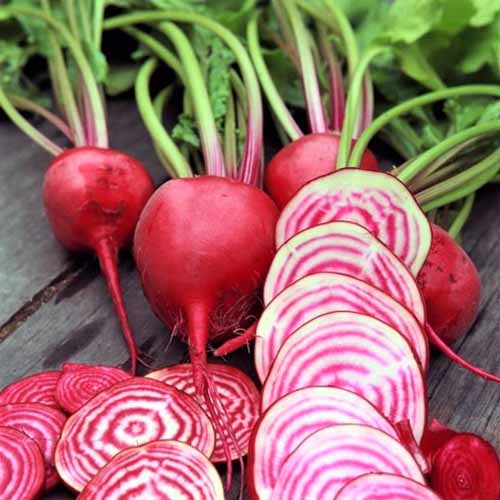

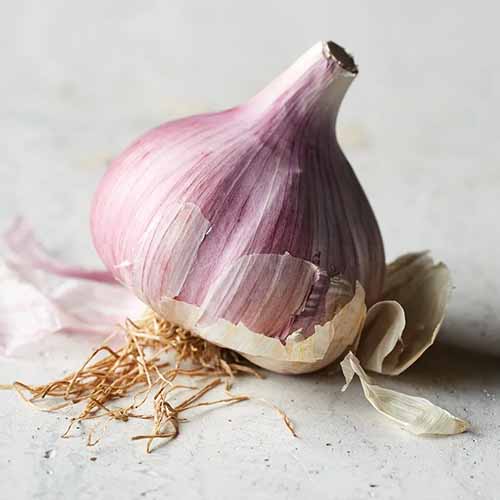
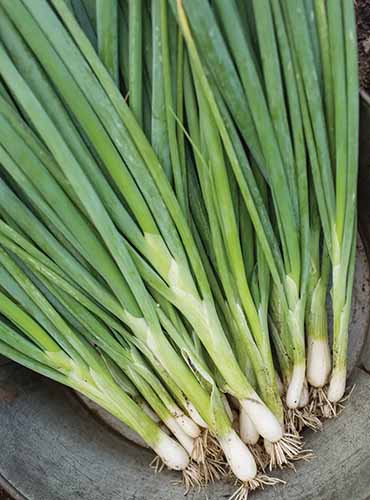
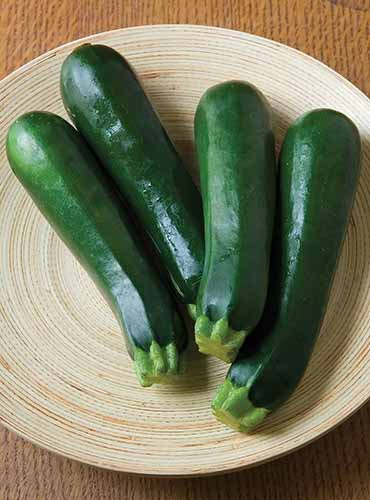
This article has been so helpful to me. You covered everything so well and I will use it as my shopping list.
Thanks for reading Nikki!